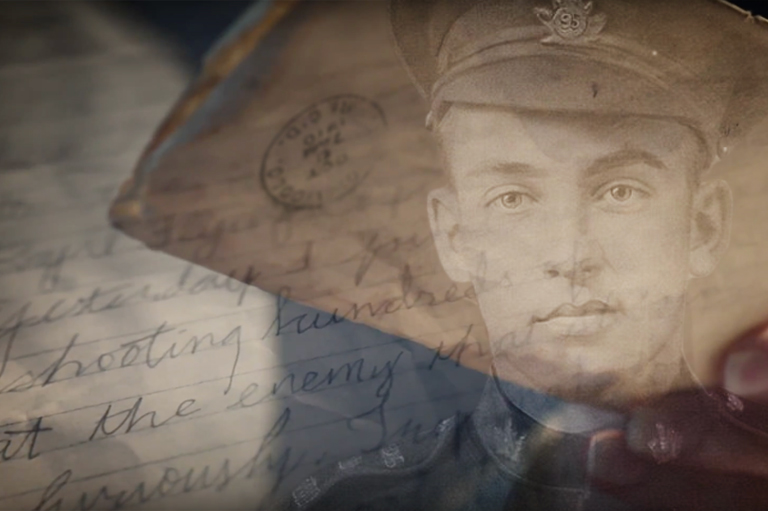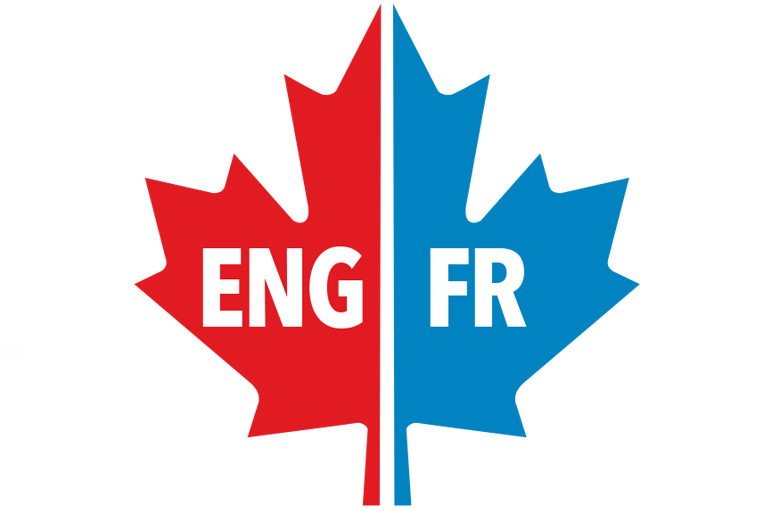War and Peace in the Classroom
This educational package is inspired by Canada in Focus Episode 1: War & Peace.
Talking about War and Peace in the Classroom
Written by Kelly Hiebert, 2021 recipient of the Governor General’s History Award for Excellence in Teaching
Our history is plagued with issues that need to be critically examined. Even the heroic efforts of Canadians during wartime are complicated by the discriminatory treatment of Indigenous peoples, people of colour, and other minority groups. Teaching about war and peace in Canada is not easy and we often find ourselves uncovering the most horrific examples of what Holocaust survivors, Elie Wiesel and Primo Levi, describe as “man’s inhumanity to man.”
Our aim as educators should not just be covering the great achievements made in Canada but to challenge the traditional narratives that oppress various groups in Canada. Now more than ever, we can see the polarization of society and the scapegoating that often follows. We must learn about Canada’s role in perpetuating racism, homophobia, xenophobia, and antisemitism that have existed throughout our country’s young history. We must challenge ourselves and our students to critically examine government decisions. For example, statements like “None is too many” — spoken by a senior government official about immigration policies in Canada in the 1930s and 1940s — effectively denying many European Jews from entering Canada in the years leading to and during the Second World War.
I would challenge us all to think of the inspirational words of Nobel laureate Elie Wiesel who wrote, “Sometimes we must interfere. When human lives are endangered, when human dignity is in jeopardy, national borders and sensitivities become irrelevant. Wherever men or women are persecuted because of their race, religion, or political views, that place must — at that moment — become the center of the universe.”
We must study conflict as it has shaped so much of our human history, but we need to teach a complete history — including the complexities and nuances that existed at the time. History is not the memorization and regurgitation of facts but understanding the underlying issues that impacted the people of the time. It is about giving voice to those that were silenced so that they are not forgotten. This is what I try to do in my classes with the testimonies of local Winnipeg Holocaust survivors that were the same age as my students. While important to educate students about perpetrators of conflict, we must not forget about the brave people that resisted and lived in hellish conditions.
As Canadian historian Margaret MacMillan writes, “We can learn from history, but we can also deceive ourselves when we selectively take evidence from the past to justify what we have already made up our minds to do.” To do this successfully, we need to create safe and inviting classrooms that allow students to speak freely, be part of the dialogue, and support students in being vulnerable when exploring sensitive topics. Especially with difficult histories that might cause people to become upset or offended. Students need to be treated equitably and with respect. Dr. Janusz Korczak (Henryk Goldsmit), who is one of my pedagogical heroes and the father of children's rights argues,
"Children are not the people of tomorrow, but are people of today. They have a right to be taken seriously, and to be treated with tenderness and respect. They should be allowed to grow into whoever they were meant to be. 'The unknown person’ inside of them is our hope for the future."
When thinking about what it means to teach war and peace in Canadian history, remember that there are many avenues one can take to learn alongside students to help them create meaningful connections to the past and present. It is through my own personal reflection as an educator, father, brother, and husband that I have changed my educational philosophy to be in line with educator and philosopher Paolo Freire in how I teach, observe, and interact with my students.
I challenge all who read this to reflect on these concluding words at the significance that history plays in our everyday lives. Do not be afraid of your students “stirring the pot,” challenge traditional narratives to be more encompassing, and be the change that your students witness every day. In closing, Freire writes, “Looking at the past must only be a means of understanding more clearly what and who they are so that they can more wisely build the future.” I passionately believe that this is what all educators aim to achieve in their classrooms and in our lives.
More Advice from Teachers
How would you teach war and peace?
I begin teaching my unit on “Peace and War” with two questions:
- When/why has Canada chosen peace and when/why has Canada chosen war?
- Are Canadians still Peacekeepers? Should we be?
We work on a timeline of peace and war in Canada, starting from 1100 CE “The Iroquois Constitution: The Great Law of Peace” and end with Canada’s choices in the Ukraine / Russian conflict, paying attention to Canada’s choices in how we deal with conflict and considering the impact of these decisions on Canada.
– Jennifer Janzen, Winnipeg, Manitoba
Protest movements can be taught in multifaceted ways. One way is as part of a student “Be the Teacher” presentation series going into detail on an aspect of an era, such as youth protests during the Vietnam War or anti-nuclear weapon protests during the Cold War. Another way that protest movements could be a part of the curriculum is to examine current protest movements and go back to their origins, such as Black Lives Matter and the abolitionist and civil rights movements. It would be essential to analyze the continuity and change of such movements regarding what goals have been achieved, what has yet to be accomplished, and proposed ideas as to how the goals of the protest movements could be fulfilled.
– Shannon Leggett, North Vancouver, British Columbia
Teaching about war and peace in Canada requires a balanced approach. It is important to use primary source materials in a variety of formats which reflect multiple perspectives: from leadership, those who were responsible for the outbreak of conflict and through peace negotiations; from the soldiers on both sides of the conflict; as well as the innocent victims who were impacted by the damage and destruction; and the outcomes of the peace negotiations and settlements. Using an inquiry-based learning approach, students are encouraged to choose from a variety of topics, create a research question and to demonstrate their learning and understanding in various formats, which combine visuals, multimedia, and oral communication. Topics could include battles and strategies, the short-term and long-term consequences of war on victims, exploring war from the perspectives of the artists and cartoonists, poets, and writers. This allows for students to make personal connections to their research and increases their overall interest in the project.
– Katy Whitfield, Toronto, Ontario
When we talk about Canadian identity, my students often bring up Canada’s reputation for peace. I like to encourage them to investigate how that reputation came to be and the role war has played in our identity. We study how internal conflicts like the Upper and Lower Canada rebellions and the Red River and Northwest resistances led to the creation of the country we know today. We explore how our participation in the First World War led to greater independence and a stronger national identity, and then we evaluate how Canada’s international reputation has been shaded by our decisions to participate in some conflicts but not others. We study the creation of modern peacekeeping and consider whether Canada has lived up to that legacy. Of course, we also study the war raged on our Indigenous population and question whether a country built on that violence can ever be truly considered peaceful.
– Katie Tressel, Langley, British Columbia
The idea of war and peace in Canada can be brought out by demonstrating how two important Canadians worked so hard on the world stage to preserve world peace: John Humphrey and Lester B. Pearson. Showing the Heritage Minutes for both figures sparks interest in the topic of peacekeeping and opens additional discussions about Canada’s role in global peacekeeping missions.
– Emilia Adorante, Thornhill, Ontario
How do you make war and peace relevant and engaging for students?
When learning about Canada and the Second World War, my students are presented with the challenge of understanding an event from three different perspectives. They begin by choosing an event of historical significance. Next, the students identify the short-term causes of the event, and put it into its historical context with reference to the timelines of the war. The next step is to determine the historical significance by looking at the impact, revelations about those who were involved in the event, and resulting changes. Finally, the students identify three objects that would have been used and owned by different individuals connected to the event. Using the demonstration of learning strategy of a biopoem, the students share the results of their inquiry by explaining how that object was witness to the decisions and actions of its user.
– Katy Whitfield, Toronto, Ontario
The fact that there is a war going on between the Ukraine and Russia is an engagement point for students. They are very concerned and display some anxiety about it. I start with “Peace” because I want the students to know that there are options, and that Canada has chosen non-violence in many circumstances. We look at primary and secondary documents, YouTube videos, we take a tour of local war monuments, and this spring we went to the Royal Aviation Museum to understand Canada’s role in WWII with respect to aviation.
– Jennifer Janzen, Winnipeg, Manitoba
I find that war is a topic that students find naturally engaging. They have enough cultural knowledge of events like the World Wars to be curious about the role Canada played. I also find that pushing students to question how they describe their country leads to high levels of engagement: the dissonance between the stereotypes they know (“Canadians are nice and they’re always apologizing!”) and the history they learn leads to fascinating conversations.
– Katie Tressel, Langley, British Columbia
More Resources from Canada’s History
Lesson Plans and Activities on War and Peace
Learn More with These Resources
- Canadian Peacekeeping Missions, Government of Canada
- Our History, United Nations Peacekeeping
- Thanadelthur: A Quest for Peace, Hudson’s Bay Company
- The Fall Of Canadian Peacekeeping: Should It Be Revived?, Canadian Armed Forces
- Peace Studies Resources, Alberta Council for Global Cooperation
- Tools for Teachers, Canadian Red Cross
- Editorial: John Humphrey, Eleanor Roosevelt and the Universal Declaration of Human Rights, The Canadian Encyclopedia
- Lester B. Pearson, The Canadian Encyclopedia
- Heritage Minutes: John Humphrey, Historica Canada
- The Lost Heritage Minute: Lester B. Pearson, Historica Canada
- For primary sources check out “The 10” book series. Specifically, “The 10 Greatest Canadian Political Leaders,” “The 10 Most Challenging World War Experiences,” “The 10 Most Significant Conflicts on Canadian Soil”
- Canada at War and in Peace Around the World, Canadian Fallen
- Lester Pearson and the Suez Crisis
- Bio-poem: Connecting Identity and Poetry, Facing History and Ourselves
- Black Canadians in Uniform — a proud tradition, Government of Canada
Themes associated with this article
Advertisement

Canada in Focus is made possible through the generous support of The Northpine Foundation.



















